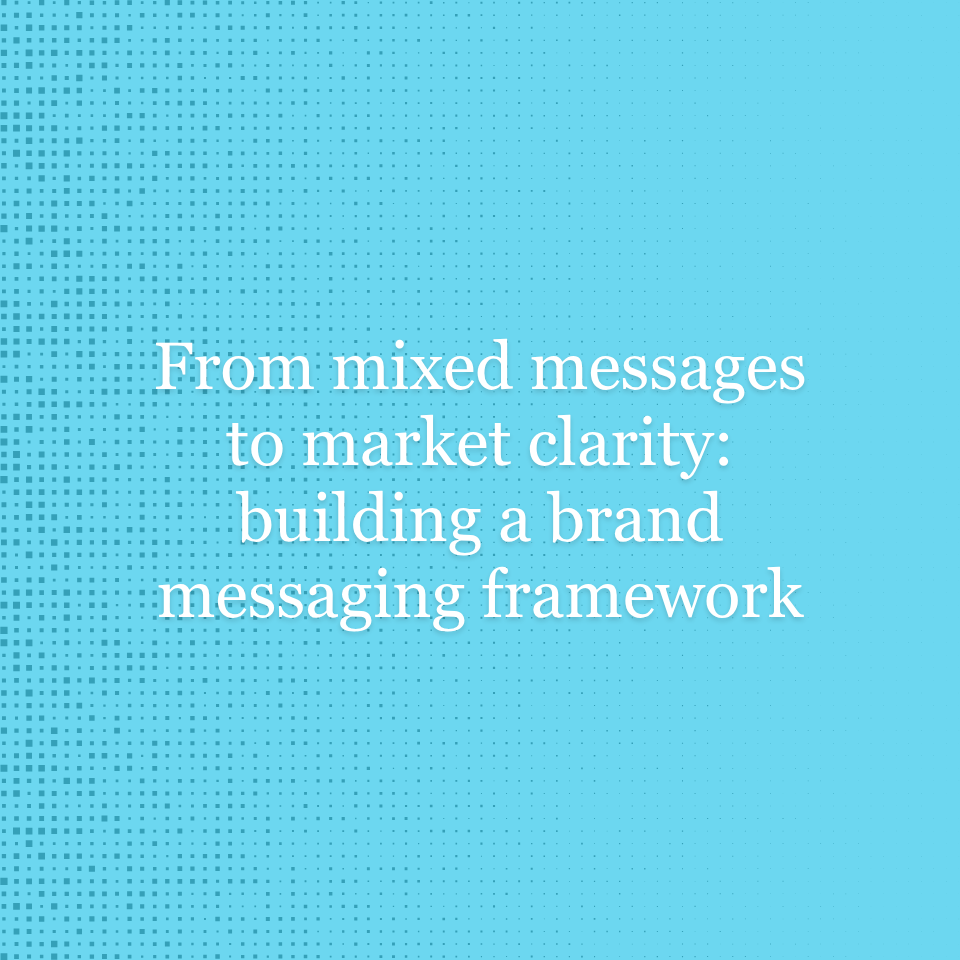“We need a stronger brand” or “Brand needs to drive our growth” are probably the most common phrases that we hear from clients that come to Northbound for brand strategy work. These clients may be marketing managers, or product executives, or CEOs. They all use the same words, but do they mean the same thing?
As the conversation continues, it is clear that “brand strategy” may mean very different things to different people. For some it means getting noticed in new markets or driving revenue by stealing their competitors’ share. The brand is about the external exposure: appeal to specific audience segments, communication, promotion, and competing in a differentiated way.
Yet, for others it’s about creating clarity of the brand to (re)energize the company, streamline business priorities, decisions and operations. For these people, the brand is about the internal alignment and the core idea of why the company exists in the first place.
These are two distinct concepts of what “brand strategy” or “brand work” means. Neither is right or wrong. But each has its time and place. And, neither is a substitute for the other.
- The external exposure work is brand or marketing campaign work. It is the right kind of work when the brand needs to make moves in the market and reach very specific goals. The success of campaign work is relatively easy to measure by things like revenue increase, market penetration and other ROI metrics. Campaign work usually has a set timeline – it has a target date – and has very specific activities and creative executions associated with it.
- The internal alignment work is brand foundational work. It is the right kind of work when an organization needs to clarify, evolve, or reinvent its place in the world, including its role in the customers’ lives. Foundational brand work is geared toward accomplishing virtuous goals. There is no timeline or time horizon for brand foundation – it doesn’t expire at the end of the fiscal year or a promotional season. It is evergreen. Brand foundational work is about defining the brand – or organizational identity – through foundational elements like positioning (who, what, why of the brand), brand purpose, personality, verbal identity and visual identity. It oftentimes includes brand narratives and core messaging. All brand work transcends, but informs, any campaign work.
Brand Foundational Work
Marketing and Sales Campaigns
Objective
Unite the company with a single idea to create efficiency, affinity, and cross-sell/stretchability of the whole portfolio
Promote, sell specific solutions, offerings, or products
Timeline
Evergreen – the longer you can use it, the better, provided it’s still relevant in the market
- A successful brand strategy lowers the overall cost of revenue, increases efficiency of campaign work, raises price premiums as long as brand integrity is maintained
Temporary – change it as often as your goals, KPIs, and sales targets change
- Successful campaign work leads to optimal tactics to achieve specific targets, but execution has a lifespan and effectiveness is bound to campaign timeline
Variations
None/Singular – there is one brand, and these elements need to work in every touchpoint from product to HR to sales to service to marketing
Multiple/Varied – test multiple campaigns and messages against one another to determine which reaches the specific goal or KPI best with each segment or for each product or channel
Assets
- Brand positioning, purpose
- Brand voice and verbal identity
- Brand logo and tagline
- Names of the corporate brand, sub-brands, products and features
- Brand pillars and brand messaging pillars
- Specific visual elements such as typography, icons, or style of photography
Creative campaigns specific to a channel, a persona/segment, or a product line:
- Creative concepts against a specific point-in-time campaign objective
- Persona-based and product-specific messages + CTAs
- Content and design for specific channels/segments
- Print and digital collateral
- Media planning and audience targeting tactics
Financial metric
- Creates a net multiplier or force multiplier effect – the brand is valued higher than its cost
- Reduces operating expenses by creating operational efficiencies, effectiveness in innovation and investments, employee and customer retention, and an incremental increase in standard ROI on sales/marketing activities
ROI or IRR on specific revenue investment activities and campaigns – an incremental percentage of the investment is returned, with higher return for more highly effective investments
Role
Whole company, inclusive of all segments and products
By segment, persona, product, channel, or industry
In my career, I have done both kinds of brand work – at various agencies and in different kinds of client-side roles. When people say they need a “stronger brand,” they don’t necessarily distinguish between the two. They oftentimes conflate the foundational work with campaign work – causing a false binary. I believe a lot of the confusion comes from using the term “brand strategy” in both cases.
When I worked on the Miller Lite rebrand a decade ago, we didn’t start the advertising planning, packaging design or social media promotions (i.e. the campaign work) until the brand foundation work was complete. In fact, it took months of consumer research and brand discovery work to figure out the positioning and identity strategy for the brand (i.e. the foundational work) before various creative teams could be briefed on the campaign work and deliverables in their respective areas. More recently, I worked with a technology client searching to bring their organization together around a core idea of who they are, so that disparate business units could be aligned and benefit from being together and a part of something greater. The foundational work unlocked new growth opportunities because the brand positioning showed untapped demand spaces for innovation that could drive and multiply the business results over the years. And while they pursue these opportunities, now they have brand foundation as a platform to launch targeted segment campaigns to drive specific quarterly goals.
Developing a brand foundation is like having an architect before building a house. The architect develops a vision and blueprints for what the house will look like – it aligns the owners and contractors and suppliers around a greater vision. Without the architect, while every trade of homebuilding may be masterfully done in isolation, the house may just not come together for the owners’ long-term enjoyment.
Ready to discuss your brand strategy? Contact Northbound for a consultation.




